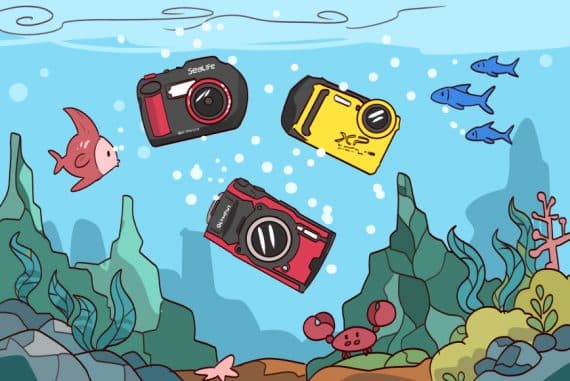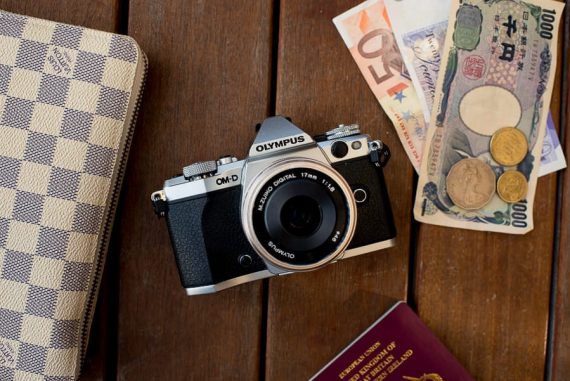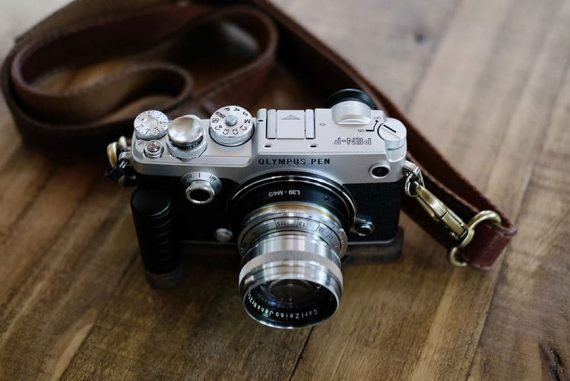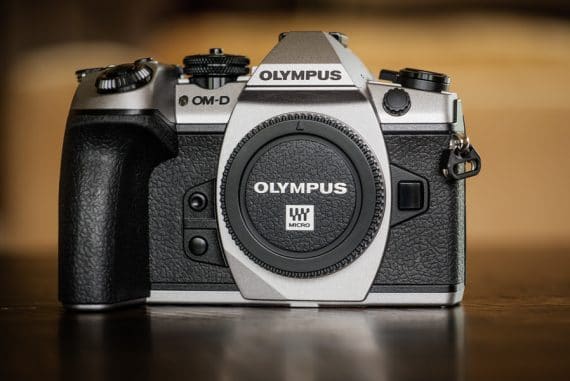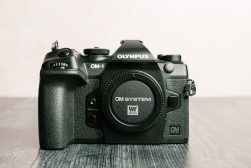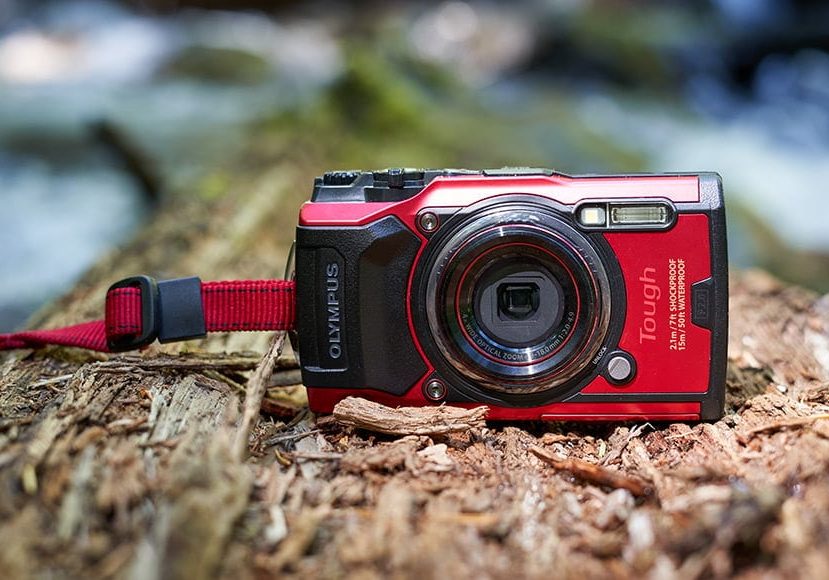
Olympus Tough TG-6 Waterproof Camera Review
The Olympus Tough TG-6 is durable, compact, and ready for adventure. But is the image quality up to scratch? Find out in this honest review!
The Olympus Tough TG-6 is one of the most rugged cameras on the market. It’s crushproof, freezeproof, can be dropped without incident, and is, of course, waterproof.
For those of us leading very active lives, it’s sometimes important to have a camera that you just don’t have to worry about. The Olympus TG-6 has far more features for the still photographer than a GoPro, and is just about as indestructible.
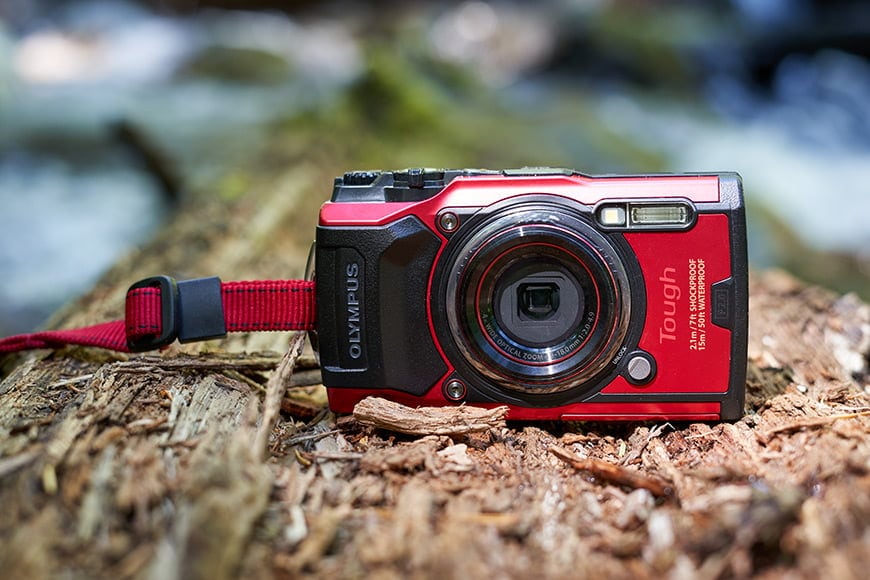

This durable point-and-shoot is small, sleek, and definitely ready for adventure.
As an avid hiker and backpacker, I was excited to get my hands on this little compact – not just for its ruggedness, but also to try out its highly touted underwater features.
After a few weeks of playing around with it, here’s what I found out.
Olympus Tough TG-6 Key Specs
- Relatively indestructible – you can take it places you wouldn’t dare take a normal camera or phone
- Great underwater performance
- Fantastic macro capabilities
- Can take RAW images
- Lots of advanced features
- Simply a fun camera
- Difficult to access advanced features
- Mediocre low-light performance
- Menu isn’t particularly helpful or intuitive
- Image quality could be better
- Sensor: 12MP, 1/2.3″ (6.16 x 4.62 mm) BSI-CMOS sensor
- Processor: TruePic™ VIII
- Lens: 25-100mm equivalent F2.0-4.9
- Shutter Speed: 1/2 to 1/2000 sec. (Night Scene, A mode: up to 4 sec.)
- Max. shutter speed: 1/2000 sec
- Dimensions: 113 x 66 x 32.4 mm
- Weight: 253 g
- Image stabilization: Yes
- Max Image Resolution: 4000 x 3000
- Optical Zoom: 4x
- ISO: Auto, 100-12800
- Shockproof from 7ft (2.1m), Waterproof to 45ft (15m), Freezeproof to 14°F (-10°C), Crushproof to 220lbf (100kgf)
- Rear LCD Screen: 3″, 1.04M-dot display (non-touch)
- Minimum focusing distance: 0.4″ (1cm)
- Burst shooting: 20 fps
- Video: 4K/30p, 4K Timelapse, FHD 120fps High-Speed Video
- File formats: RAW and JPEG
- Action Track Sensor System includes GPS, compass, altimeter, accelerometer and thermometer
- Numerous flash accessories and conversion lenses are also available
- Numerous special features including in-camera focus stacking, Pro Capture mode, and selectable underwater white balance modes
The TG-6 comes in red or black and is usually priced at around US$379.
Build & Appearance
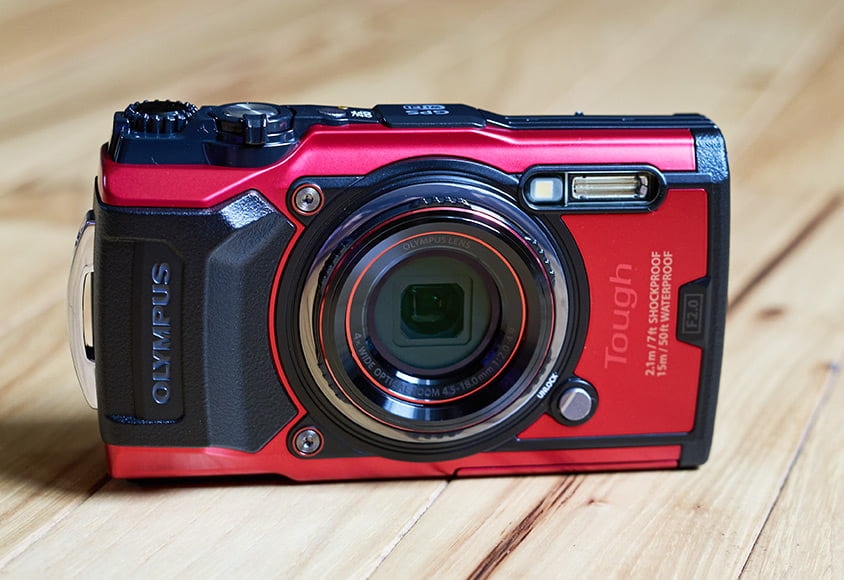
The Olympus Tough TG-6 comes in either red or black. I really enjoy the look of the red version.
The Olympus Tough TG-6 is an attractive little camera. It’s not as small and light as some compact cameras, but it’s certainly pocketable. It also fits nicely in the hand.
Of course, the main reason for buying this little gem is its build quality, and it certainly doesn’t disappoint. I was pretty rough with it during my first month of testing and it came out top-notch in every test I gave it.
In fact, the first thing I did with it when I got it was throw it in a pool. (Not being used to waterproof cameras, I gotta say that was much harder to do than one would think!!)
The waterproofing seals worked without a hitch and there was never a moment where the camera itself seemed at risk of leaking.
After that, I took it on a couple of climbing trips where it got banged around a bunch. Not a scratch.
I even took it to one of the famous protests in Portland, OR, where police were throwing tear gas canisters and other crowd-control projectiles. Though I had to wipe the tear gas off the lens a few times so the autofocus could work, the camera itself was unharmed from the tear gas particulates.
(There were a number of reporters in the crowd with expensive cameras… the risk to gear was such that I honestly thought they were crazy, even if they did manage to get the one iconic shot everyone was going for.)
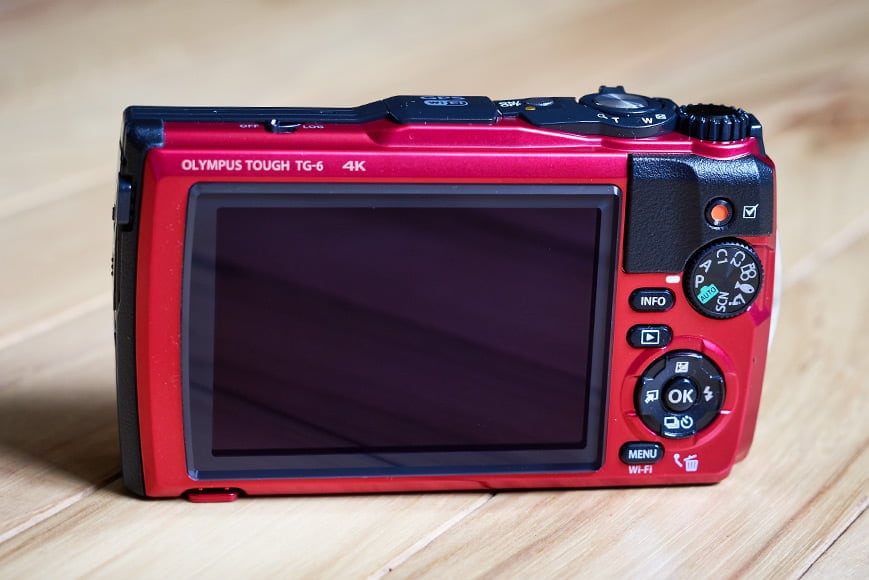
The rear LCD screen is large, taking up most of the rear part of the camera.
At 3 inches, the rear LCD screen is large and easy to work with, though it would be better if it were a touch screen – at least as far as controlling focus is concerned.
One thing that’s a bit annoying is that, while the camera as a whole is relatively indestructible, the screen is pretty easily scratched. That makes buying a screen protector at the same time as buying the camera fairly important.
In fact, this is the only build issue I have with the camera. Once you get a screen protector, it’s good to go, and you’ll never have to worry about anything screwing it up.
One thing I really appreciated was that both of the doors (one for the battery and memory card, the other for the I/O ports) have dual locks. I haven’t seen that feature on any of this camera’s competitors.
Ergonomics & Handling
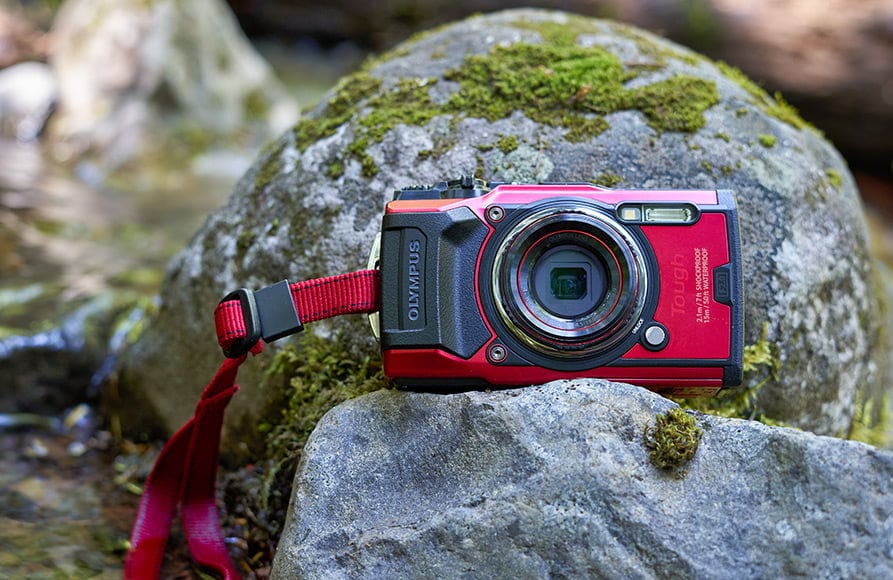
If you’re used to smartphones, the TG-6 will in most ways be a far improvement to what you’ve you’ve been using – except for the lack of touch screen. For those of us used to interchangeable lens cameras, however, compacts do take some getting used to.
That being said, the fact that the TG-6 is a bit hefty means the ergonomics are much better than smaller compacts. The weight makes it easier to compose with less handshake. Combined with the lens stabilization, getting sharp photos in regular light is quite easy.
All the buttons and dials work well. They’re firm, but not distractingly so. I’ve heard that others found them to be mushy, but that wasn’t the case on the unit I tried out. Overall, everything felt good.
One thing I really don’t like about the TG-6, though, is how hard it is to get to the more advanced features. Even something as simple as switching from JPEG to RAW was esoteric – there was no way to figure it out without the manual. Then, once I did look it up, it didn’t work. I actually had to call customer service.
Also, there’s a bit of a learning curve for functions like focus stacking and sensor tracking. As a photographer who’s learned to use a number of different cameras, I was annoyed with how non-intuitive utilizing the TG-6’s more incredible functions was.
Focus Performance

4.5 mm | 1/80 sec | f/2.8 | ISO 100
Under normal circumstances, the 25-point autofocus system of the Olympus Tough TG-6 works as well as most compacts I’ve used.
In fact, when using its microscope mode or even while doing macro shots in auto, the TG-6 performed admirably. I didn’t have too many fuzzy shots to cull out once I got back to my computer.
That being said, it definitely took some practice with the camera to get used to how it chooses what to focus on. Not being able to choose the focus via the rear LCD was aggravating. (If there’s a way to do that, I didn’t figure it out.)
The lack of touchscreen really affected things here.

4.5 mm | 1/125 | f/2.8 | ISO 100
The TG-6 also has face detection and an AF tracking mode, neither of which I used much.
The face detection worked fine when the subject was looking at the camera, but otherwise not so much. The AF tracking mode was annoyingly hidden in the depths of the menu so I didn’t bother with it much.
The TG-6’s autofocus in low-light situations was also as expected, which is to say not exceptional. Small sensors really show their weaknesses during low-light situations and the TG-6 is no exception, but I’ll to get to that in the next section.
Low Light Performance

When my subject(s) weren’t moving and I had time to compose the TG-6’s night-time images came out ok. Not stunning, but ok.
As mentioned before, I took the TG-6 out to the Black Lives Matter protests in Portland, Oregon – a situation where I really wouldn’t want to expose my Sony a7 III to the many potential dangers.
It’s honestly a relief to not have to worry about my camera in this type of scenario. I often cover protests and other tense situations and having to protect my camera can become very distracting.
That being said, it was challenging to get decent shots with the TG-6. When things weren’t moving and more or less well-lit, the images came out ok. But taking images quickly or “off the cuff”, which was a bit necessary during most of the night, didn’t yield fantastic results.
You can see in the image below that much of it is fuzzy. The TG-6 tends to shoot fairly wide open (the lens only goes to f/4.9) so I’m not surprised that some parts of the image are fuzzy, but I would have liked more of it to have been in focus.
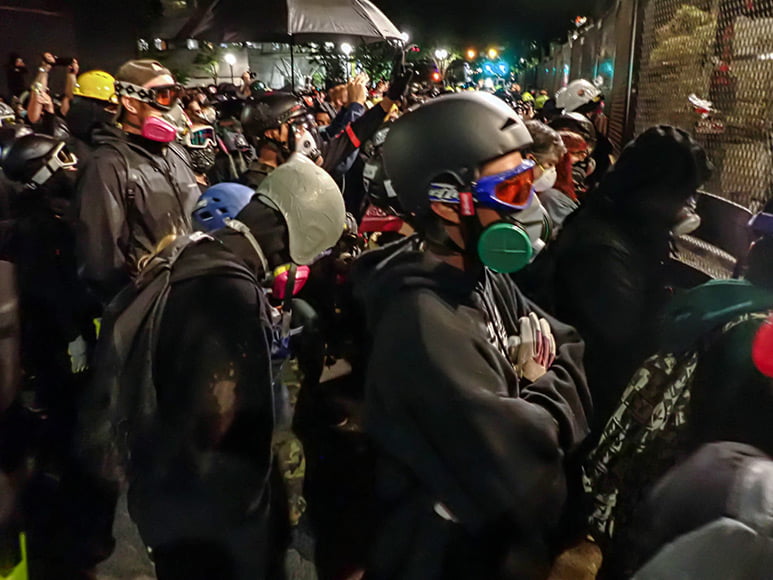
In this situation, he TG-6’s autofocus had a challenging time – even before the tear gas.
Once there was any haze in the air at all, I had to say goodbye to any hope of sharp images. To be fair, I was asking a lot of the camera – the tear gas particles got over everything and I had to repeatedly keep cleaning the lens. Still, it would have been nice to have had a bit more clarity in the shots.
(All of these shots were taken on auto and as JPEGs. I wasn’t able to get the camera to switch to RAW without customer support.)
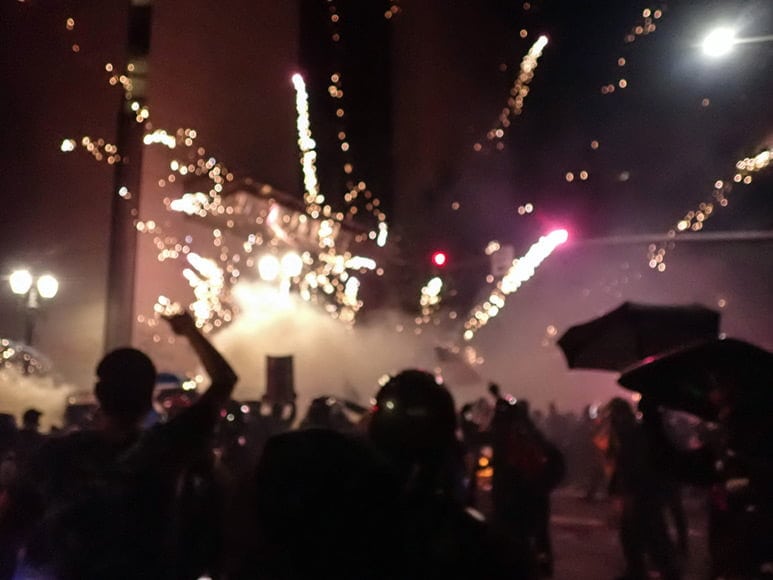
The fireworks mixed with tear gas make for an interesting effect in this image, but nothing’s particularly sharp.
One thing the TG-6 is known for is a rather aggressive anti-noise filter. If you find it a problem you can always turn it off.
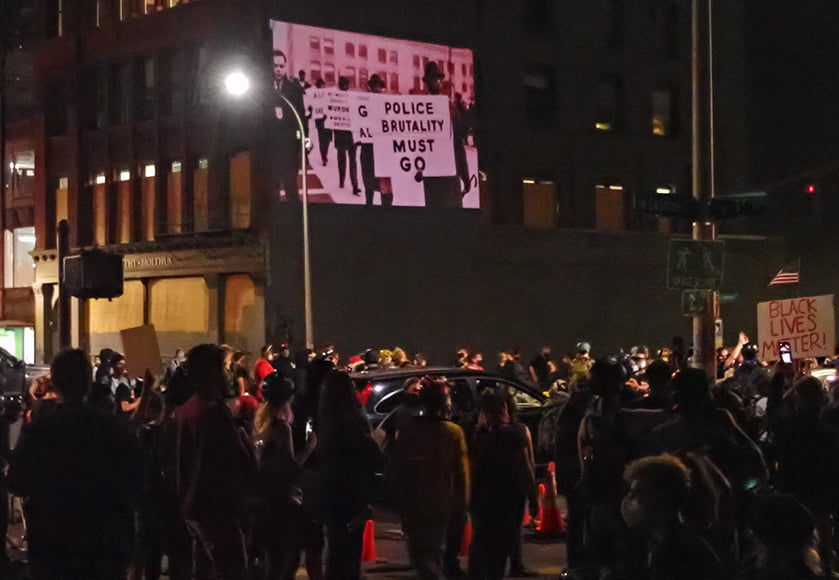
The TG-6 is known for its aggressive anti-noise filters. You can see them in action here. (No sharpening or noise reduction was applied in post-processing.)
Overall I’d have to say that the TG-6’s nighttime performance was at best so-so. I didn’t try it out in a lot of other low-light situations, but in this one, I definitely would have like to have had at least a few sharp photos.
Image Quality
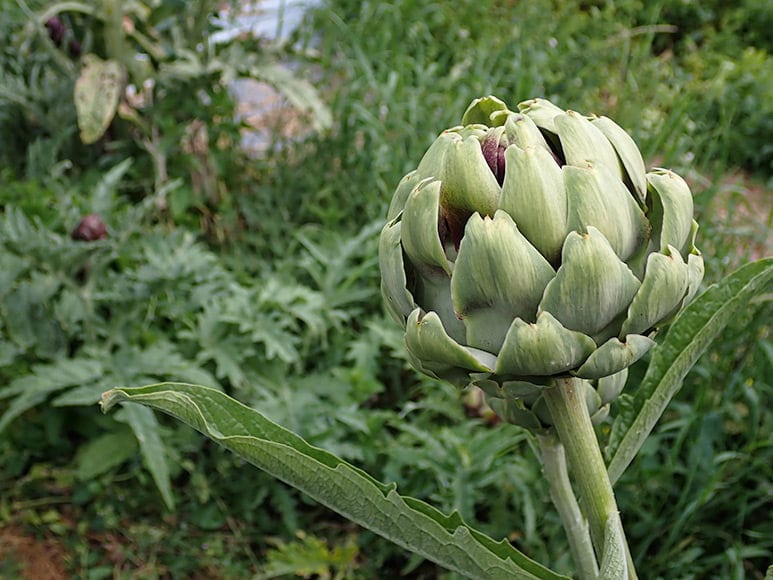
This image was captured in auto mode. | 1/320 sec | F/2.8 | ISO 100
In normal lighting, and especially with subjects that are fairly close, the TG-6 has relatively decent image quality for its price point and sensor size.
Subjects come out crisp, clear, and with good color. There’s a bit of over-sharpening applied to some JPEGs, but in general you can get some great photos with this little camera.
Overall, I found that the TG-6’s white balance was fairly accurate, even underwater. There wasn’t a lot of levels or curves adjustments I needed to make to get the image looking as it should.
It does tend to overexpose, however, so the exposure compensation tends to come in handy. Unfortunately, you can only use exposure compensation in P or A mode. That’s something I hope future versions of this camera address.
The depth of field will necessarily be shallow with this lens, but that makes it ideal for close-in photography.

Here the water droplets are nicely sharp. | 11.88 mm | 1/160 sec | f4.9 | ISO 100
While close-up subjects shine with this camera, overall scenery comes out a bit lackluster. I took a number of photos from the trail with the TG-6 and didn’t really have much at the end of the day to call home about.
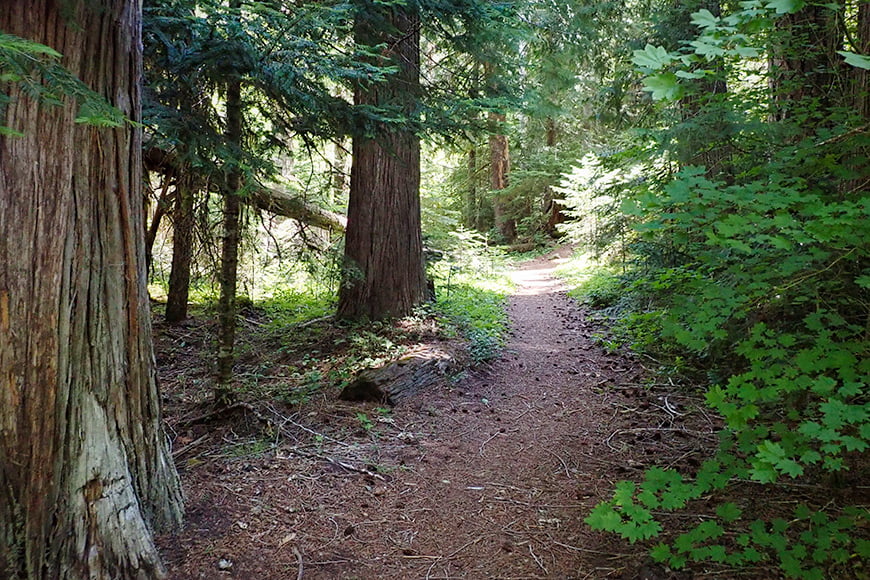
While the TG-6 captures close-up subjects exceptionally, overall scenes didn’t come out quite as impressive. The sharpness, clarity, and overall image quality of these shots definitely left something to be desired.
One of the cooler features the TG-6 comes with is in-camera focus stacking. I nominally tried it out, but when it seemed clear I was going to have to devote some real time into learning how to use it, I didn’t really get around to it by the time of writing.
That being said, the macro images I’ve seen in other reviews have been quite impressive.
Some folks might balk at the mere 12 megapixels the TG-6 comes with, but for most purposes, 12 MP will probably be more than enough.
In fact, since the chip in the TG-6 is so small, the lower pixel count should help it perform in lower light situations. It’s also a key factor in allowing the lens to open up to f/2.0 at its widest angle.
Overall, I’d have to say that above water the TG-6 does best with close-in, well-lit subjects. Underwater is a bit of a different ball game. Let’s take a look.
Underwater Performance
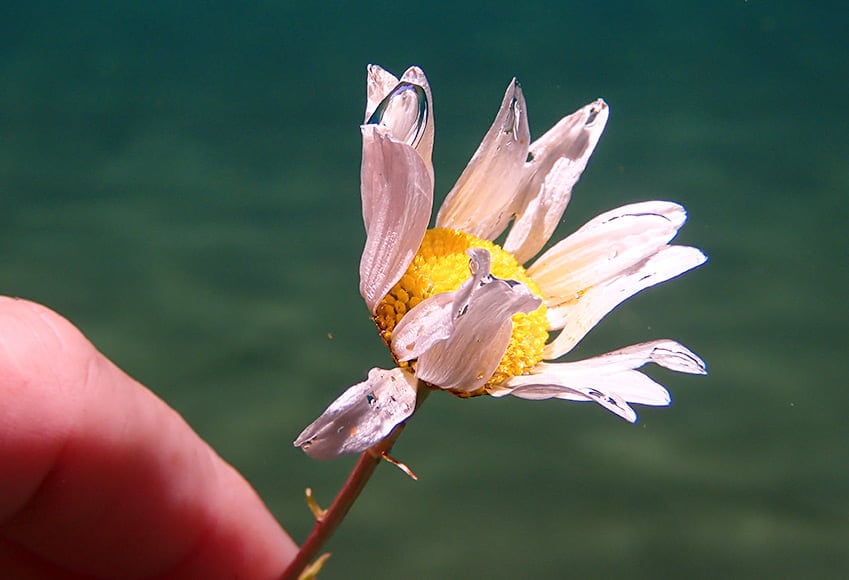
The underwater auto mode on the TG-6 works exceptionally well.
The Olympus Tough TG-6 is billed as one of the best underwater cameras available and I have to say, I really loved it’s performance underwater.
Never having had a waterproof camera before, I admittedly have limited experience, but everything I tried to do with this little guy really impressed me.
The underwater mode is really easy to use. Just move the mode dial to the fish and five choices will pop up. There are also three different white balance settings as well.
Since I wasn’t diving on these excursions, all of the images below were taken with the shallow water setting.
Not having had an underwater camera before and knowing a bit about its small sensor challenges, I didn’t really expect much.
After playing around in a pool as well as both a river and a fast-flowing creek, I came away quite pleased.
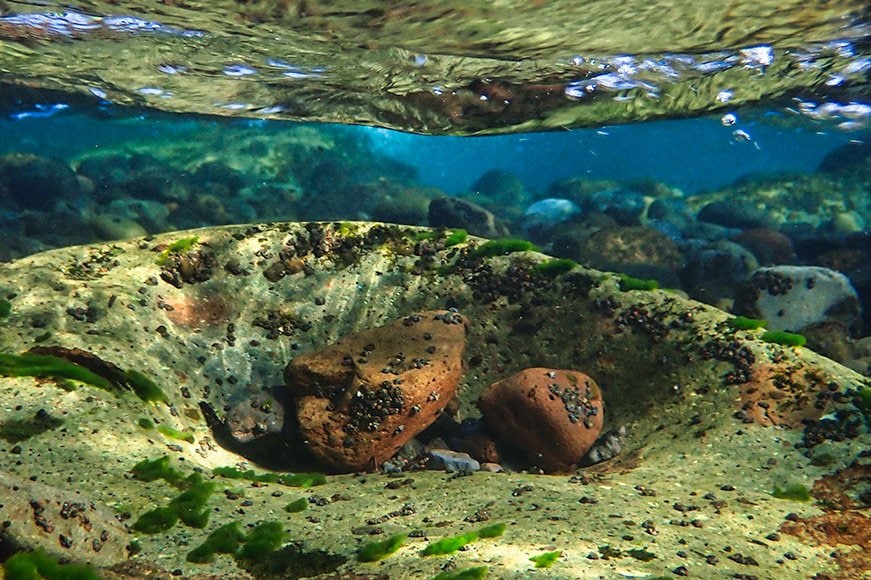
This shot was taken at a fairly fast-moving spot of the Breitenbush River in Oregon.
Most of the time I was unable to use the LCD screen to compose – I didn’t have either a mask or goggles – I’d just point the camera and hope it focused on my subject. Still, most of the images came out much better than I expected.

These daisy shots were taken in a pool at Breitenbush hot springs. All were in auto mode.
None of these images are wildly sharp, but then, given that I was just pointing and shooting, I’m not sure I could have expected more.
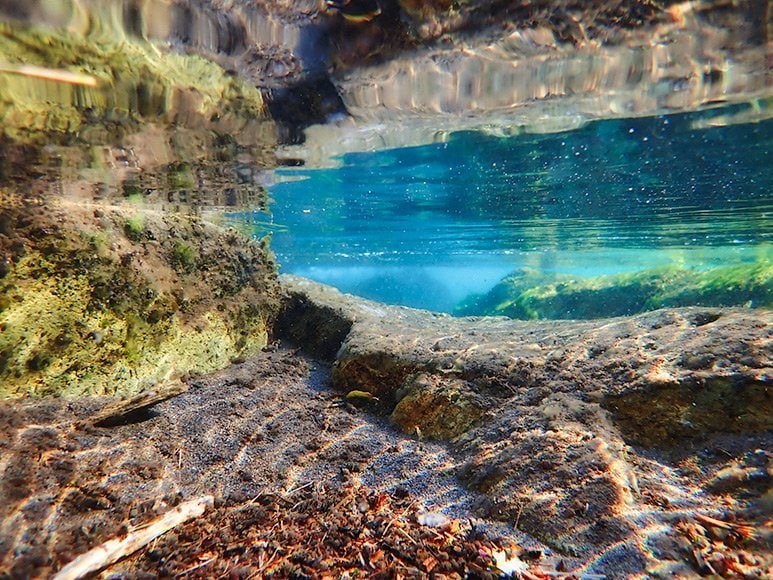
An underwater scene from the Breitenbush River.
I’m really enjoying the bright, rich colors that the TG-6 yielded in many of the shots.
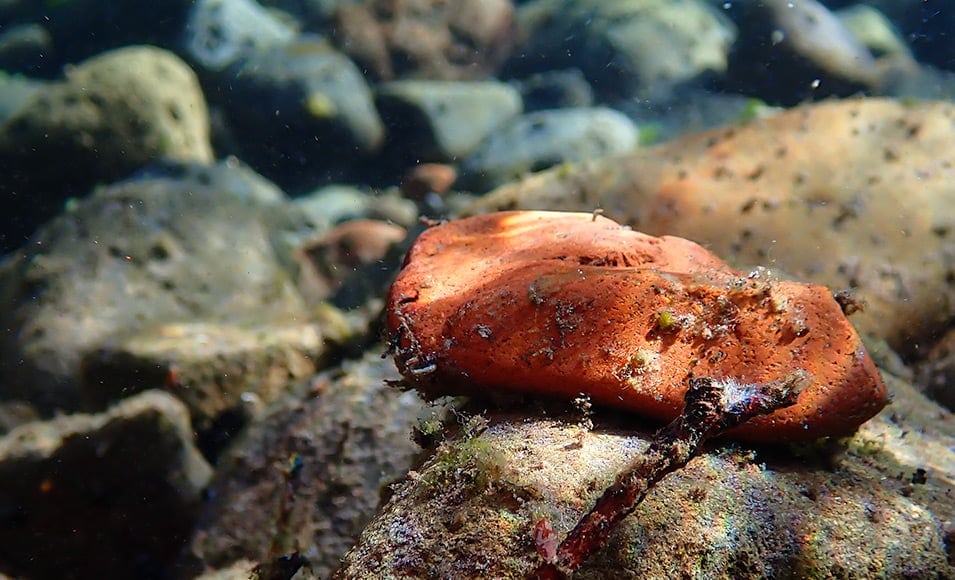
Having an underwater camera with me while I was on a hike allowed me to get photos I just couldn’t get otherwise. This isn’t a river that anyone would go diving or snorkeling in, so the images are definitely one of kind (at least for me).
I’d honestly never seen the bottom of the river from this viewpoint.
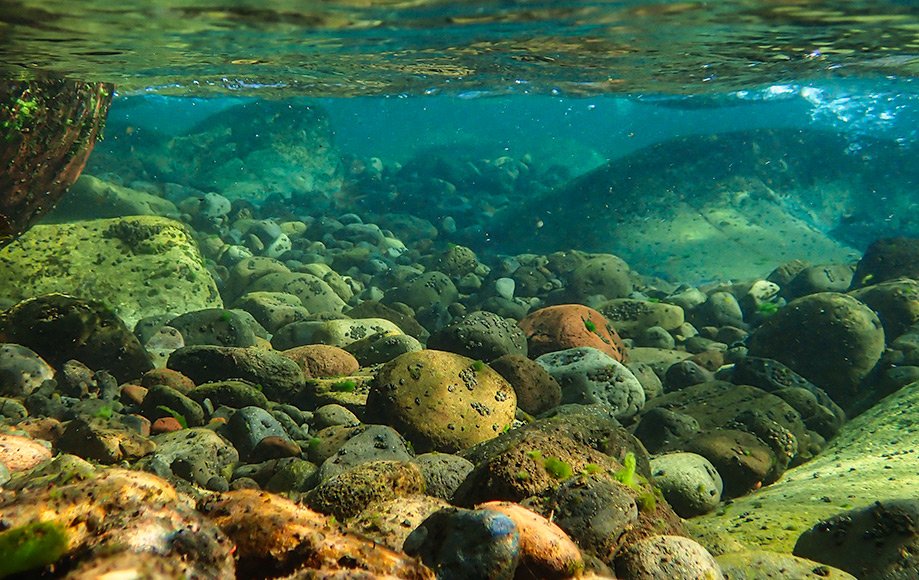
I love the surrealness of the underwater landscapes of a river I thought I knew really well. Now I know it even better.
The underwater photography capability really made having this camera worthwhile to me. All of these photos were of ordinary places without the benefit of having weird and strange subject matter. I loved what came out.
In fact, I wish I’d had the opportunity to go diving or snorkeling before this review. Having this little beauty would make it worth it, even in the cold, murky waters of Oregon. (My apologies to those of you who like diving in the Pacific Northwest. All of my diving experience is in warmer waters…)
Granted, I’m a total amateur when it comes to underwater photography, but this camera made it fun and interesting. I’m not surprised that it’s rated as the best underwater camera on the market.
Video
One of the improvements the TG-6 sports over the TG-5 is a number of new high-speed recording modes. Not only is 4K video at 30fps available, there’s also 1080p up to 120fps, 720p at 240fps and 360p at 480fps.
I’m mostly a still photographer, so I just tried out the most basic of video features. Nothing was better than my smartphone, but since I was using the TG-6 in situations where I didn’t want to risk my smartphone, it was a fair trade-off.
There’s a Movie IS feature that works well for stabilization. Audio levels on the TG-6 are adjustable, and there’s also a wind filter.
Other Useful Features
-
Environmental Sensors and Tracking
I didn’t really put the environmental sensors on the TG-6 through their full paces. Even as an avid wilderness hiker, I don’t tend to organize my photos by that kind of metadata. (I write things down instead… a bit old school, but it works for me.)
For those of you who do, however, it’s incredibly useful.
Where most cameras limit themselves to a GPS, the TG-6 has an altimeter/depth gauge, compass, accelerometer and even a thermometer.
The thermometer wasn’t particularly accurate in my testing, but the rest seemed pretty right on.
If you’re a backpacker, be aware that keeping the tracking functions activated will drain your battery a lot more quickly. (Another reason I didn’t play around with it too much on my hikes – I didn’t have a spare battery and tend to go long distances.)
Olympus’s OI Share app is simple enough, though alone it’s not enough to assemble the tracking information. For that, you’ll also need OI Track, which will download the camera’s log files and sync them with the photos that you’ve already placed on OI Share.
Using the two apps together, you can make a pretty cool map of all the places you’ve taken photos.
-
Pro Capture
Both the TG-5 and the TG-6 have a Pro Capture feature that helps capture the perfect action shots. Essentially it starts buffering frames when you push the shutter button halfway down. Once you press the shutter button fully down, you’ll have not only that moment but also the five frames before it.
-
Amazing Macro Modes
As I mentioned before, the TG-6 really excels with subjects that are close up. Its up-close focus distance is incredible – subjects need to be just 1 cm from the lens.
Some reviewers even claim they’ve had the subject literally touching the lens and still were able to focus. That wasn’t my experience… I usually needed a bit more than 1 cm, but still, that’s downright amazing.
To use that focal distance, you’ll need to use the TG-6’s microscope mode. This is an optical zoom mode with an image magnification of 7x (35mm equivalent)!
There’s also a microscope control mode that allows you to switch between 1x, 2x, and 4x magnification on the rear screen, as well as focus stacking and focus bracketing.
-
Lots of External Flashes, Lenses, and Other Accessories Available
One of the fun things about using the TG-6 is that Olympus offers a lot of accessories to go with it.
From light guides and diffusers to fisheye and teleconverter lenses, there are plenty of ways to expand out the TG-6’s capacities.
There’s even an entire suite of underwater-only accessories.
Overall Performance

11.88 mm | 1/160 sec | f/3.8
It starts up quickly, wakes up from sleep quickly, and has no delay between functions.
The battery offers a respectable 340 shots per charge (unless the tracking features are on). I actually never ran out of juice on any of my forays.
It doesn’t come with an external charger, but you can buy one for a rather steep price from Olympus directly (around $70). Otherwise, you’ll need to charge it over USB.
While moving back and forth between the various modes is easy, my main complaints with this camera mostly focus around the difficulty accessing the more advanced functions.
I get that there are only so many buttons, but little in the menu system was intuitive and I had a lot of trouble figuring out how to do simple things.
On top of that, once I finally looked up on the web how to do things, they didn’t work as described. I’m not sure if that’s because the camera I was reviewing had been used before or what, but it was entirely frustrating.
Otherwise, no complaints.
Value for Money
If you need a rugged camera that just won’t break and/or you’re looking for a fantastic underwater camera, the Olympus Tough TG-6 is more than worth the price.
It can take some amazing pictures, it’s a great size, and you simply never have to worry about breaking it.
Right now it’s trending for under US$380, but that is likely to drop as time goes on.
Olympus Tough TG-6 Review | Conclusion
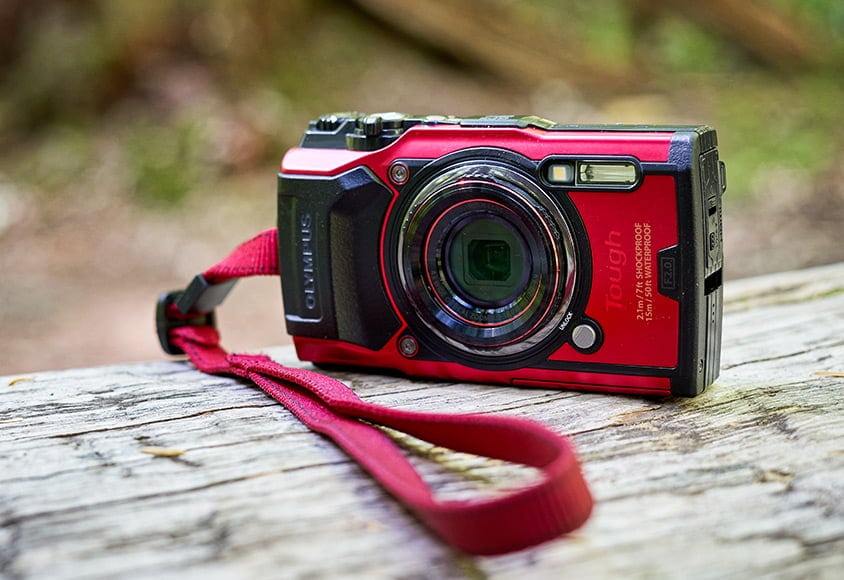
When I first looked into the Olympus Tough series, I was a little dubious about the amazingly positive reviews. Most of them seemed a bit over the top.
While I still think that’s true – your smartphone will take better photos than the Olympus Tough TG-6 in most situations – I really, really like this camera. I had read up on its pros and cons well before trying it out, but I was surprised just how much I really enjoyed the camera itself.
For one, I could take it places I simply wouldn’t risk my phone or other dedicated cameras. Secondly, there’s an unexpected fun factor that accompanied this camera. It was simply a joy to try out its different features – and I didn’t even scratch the surface.
As far as who this camera is for, I’d say this is the perfect camera for everyday shooters who don’t want to worry about breaking their camera and, even more so, underwater photographers.
If you’re a hiker who’s into tracking your progress via GPS and the other environmental sensors the TG-6 incorporates, this camera is for you, too.
For me, it’s a great secondary camera to take places where I just don’t want to risk my Sony a7 III. I need to spend some more time learning it’s deeper functions, but that’s ok too.
Overall, I have to say this is my favorite compact camera so far – mostly because of the fun factor and its underwater abilities.


This durable point-and-shoot is small, sleek, and definitely ready for adventure.





